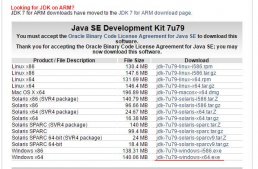1 简介:
JDK提供的java.util.Properties类继承自Hashtable类并且实现了Map接口,是使用一种键值对的形式来保存属性集,其中键和值都是字符串类型。
java.util.Properties类提供了getProperty()和setProperty()方法来操作属性文件,同时使用load()方法和store()方法加载和保存Properties配置文件。
java.util.ResourceBundle类也提供了读取Properties配置文件的方法,ResourceBundle是一个抽象类。
2.Properties中的主要方法
1)load(InputStream inStream):该方法可以从.properties属性文件对应的文件数入流中,加载属性列表到Properties类对象中。load有两个方法的重载:load(InputStream inStream)、load(Reader reader),可根据不同的方式来加载属性文件。
|
1
2
3
4
5
6
7
8
9
|
InputStream inStream = TestProperties.class.getClassLoader().getResourceAsStream("demo.properties"); //通过当前类加载器的getResourceAsStream方法获取//TestProperties当前类名;TestProperties.class.取得当前对象所属的Class对象; getClassLoader():取得该Class对象的类装载器InputStream in = ClassLoader.getSystemResourceAsStream("filePath");InputStream inStream = new FileInputStream(new File("filePath")); //从文件获取InputStream in = context.getResourceAsStream("filePath"); //在servlet中,可以通过context来获取InputStreamInputStream inStream = new URL("path").openStream(); //通过URL来获取 |
读取方法如下:
|
1
2
3
4
|
Properties pro = new Properties(); //实例化一个Properties对象InputStream inStream = new FileInputStream("demo.properties"); //获取属性文件的文件输入流pro.load(nStream);inStream.close(); |
2)store(OutputStream out,String comments):这个方法将Properties类对象的属性列表写入.properties配置文件。如下:
|
1
2
3
|
FileOutputStream outStream = new FileOutputStream("demo.properties");pro.store(outStream,"Comment");outStream.close(); |
3 ResourceBundle中的主要方法
通过ResourceBundle.getBundle()静态方法来获取,此方法获取properties属性文件不需要加.properties后缀名。也可以从InputStream中获取ResourceBundle对象。
|
1
2
3
|
ResourceBundle resource = ResourceBundle.getBundle("com/xiang/demo");//emo为属性文件名,放在包com.xiang下,如果是放在src下,直接用test即可 ResourceBundle resource1 = new PropertyResourceBundle(inStream); String value = resource.getString("name"); |
在使用中遇到的问题可能是配置文件的路径,当配置文件不在当前类所在的包下,则需要使用包名限定;若属性文件在src根目录下,则直接使用demo.properties或demo即可。
4 Properties操作实例
|
1
2
3
4
5
6
7
8
9
10
11
12
13
14
15
16
17
18
19
20
21
22
23
24
25
26
27
28
29
30
31
32
33
34
35
36
37
38
39
40
41
42
43
44
45
46
47
48
49
50
51
52
53
54
55
56
57
58
59
60
61
62
63
64
65
66
67
68
69
70
71
72
73
74
75
76
77
78
79
80
81
82
83
84
85
86
87
88
89
90
91
92
93
94
95
96
97
98
99
100
101
102
103
104
105
106
107
108
109
110
111
112
113
114
115
116
117
118
119
120
121
122
123
124
125
126
127
128
129
130
131
132
133
134
135
136
137
138
139
140
141
142
143
144
145
146
147
148
149
150
151
152
153
154
155
156
157
158
159
160
161
162
163
164
165
166
167
168
169
170
|
import java.io.File;import java.io.FileNotFoundException;import java.io.FileOutputStream;import java.io.IOException;import java.io.InputStream;import java.util.HashMap;import java.util.Iterator;import java.util.Map;import java.util.Properties;/** * Java中Preperties配置文件工具类 * @author shu * */public class PropsUtil { private String path = ""; private Properties properties ; /** * 默认构造函数 */ public PropsUtil() {} /** * 构造函数 * @param path 传入Properties地址值 */ public PropsUtil(String path) { this.path = path; } /** * 加载properties文件 * @return 返回读取到的properties对象 */ public Properties loadProps(){ InputStream inStream = ClassLoader.getSystemResourceAsStream(path); try { if(inStream==null) throw new FileNotFoundException(path + " file is not found"); properties = new Properties(); properties.load(inStream); inStream.close(); } catch (IOException e) { e.printStackTrace(); } return properties; } /** * 将配置写入到文件 */ public void writeFile(){ // 获取文件输出流 try { FileOutputStream outputStream = new FileOutputStream( new File(ClassLoader.getSystemResource(path).toURI())); properties.store(outputStream, null); outputStream.close(); } catch (Exception e) { // TODO Auto-generated catch block e.printStackTrace(); } } /** * 通过关键字获取值 * @param key * @return 返回对应的字符串,如果无,返回null */ public String getValueByKey(String key) { if(properties==null) properties = loadProps(); String val = properties.getProperty(key.trim()); return val; } /** * 通过关键字获取值 * @param key 需要获取的关键字 * @param defaultValue 若找不到对应的关键字时返回的值 * @return 返回找到的字符串 */ public String getValueByKey(String key,String defaultValue){ if(properties==null) properties = loadProps(); return properties.getProperty(key, defaultValue); } /** * 获取Properties所有的值 * @return 返回Properties的键值对 */ public Map<String, String> getAllProperties() { if(properties==null) properties = loadProps(); Map<String, String> map = new HashMap<String, String>(); // 获取所有的键值 Iterator<String> it=properties.stringPropertyNames().iterator(); while(it.hasNext()){ String key=it.next(); map.put(key, properties.getProperty(key)); } /*Enumeration enumeration = properties.propertyNames(); while (enumeration.hasMoreElements()) { String key = (String) enumeration.nextElement(); String value = getValueByKey(key); map.put(key, value); }*/ return map; } /** * 往Properties写入新的键值且保存 * @param key 对应的键 * @param value 对应的值 */ public void addProperties(String key, String value) { if(properties==null) properties = loadProps(); properties.setProperty(key, value); try { writeFile(); } catch (Exception e) { throw new RuntimeException("write fail"); } } /** * 更新配置文件 * @param key 对应的键 * @param value 对应的值 */ public void update(String key,String value){ if(properties==null) properties = loadProps(); if(properties.containsKey(key)) properties.replace(key, value); try { writeFile(); } catch (Exception e) { throw new RuntimeException("write fail"); } } /** * 刪除某一鍵值对 * @param key */ public void deleteByKey(String key){ if(properties==null) properties = loadProps(); if(!properties.containsKey(key)) throw new RuntimeException("not such key"); properties.remove(key); try { writeFile(); } catch (Exception e) { throw new RuntimeException("write fail"); } } /** * 设置path值 * @param path */ public void setPath(String path){ this.path = path; }} |
以上就是本文的全部内容,希望对大家的学习有所帮助,也希望大家多多支持服务器之家。
原文链接:http://www.cnblogs.com/xiangBlog/p/6816697.html













